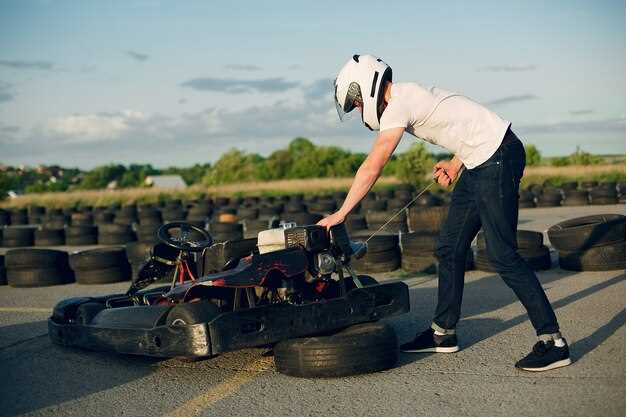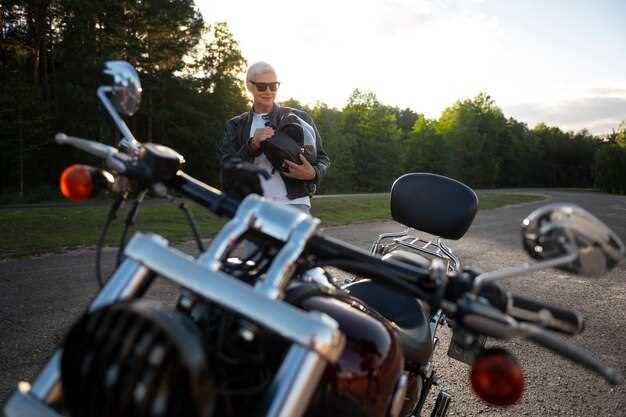
Attending your first motorcycle track day can be an exhilarating experience filled with excitement and anticipation. For beginners, stepping onto the track offers a unique opportunity to enhance your riding skills, meet fellow enthusiasts, and enjoy the thrill of pushing your motorcycle to its limits. However, it’s essential to approach the day with an understanding of what to expect, particularly regarding etiquette on the track.
As a beginner, you may feel a mix of nerves and enthusiasm. Track days are designed to accommodate riders of all skill levels, but knowing the basics of track etiquette will help ensure a safe and enjoyable experience for everyone involved. This includes understanding the proper line, adhering to flag signals, and respecting the space of other riders. Familiarizing yourself with these fundamental aspects before you hit the asphalt will contribute greatly to your confidence and enjoyment throughout the day.
In this article, we will cover the crucial aspects of your first motorcycle track day, including preparations you should make ahead of time, tips for navigating the track safely, and how to interact positively with fellow riders. By understanding what to expect and how to conduct yourself on the track, you can make the most of this thrilling experience and set a solid foundation for your future in motorcycling.
Your First Motorcycle Track Day: What to Expect
Participating in your first motorcycle track day can be an exhilarating experience. Understanding the etiquette and guidelines will help you make the most of this opportunity. The atmosphere at the track is different from the streets; it’s more structured and focused on safety and improvement.
Before you arrive, make sure your motorcycle is in good condition. Check tire pressure, brakes, and fluid levels. Bring essential gear, including a full-face helmet, gloves, riding suit, and boots that are designed for track use. Wearing the right gear is not just a recommendation; it’s a requirement for your safety.
When you arrive at the track, expect a mandatory riders’ meeting. This session is crucial for understanding the day’s schedule, the design of the track, and the rules in place. Pay close attention to the track etiquette that will be discussed, as it will ensure a safe and enjoyable experience for everyone.
On the track, you’ll encounter riders of varying skill levels. Be aware of your surroundings and use hand signals to communicate with other riders. If you’re being overtaken, move to the side of the track to allow faster riders to pass safely. Always ride at a pace that is comfortable for you but challenge yourself to improve.
Throughout the day, take advantage of instructional sessions if they are offered. Expert coaches can provide valuable tips on your riding technique, body positioning, and line selection through corners. Don’t hesitate to ask questions; the goal is to learn and grow as a rider.
Finally, have fun! Track days are about honing your skills while enjoying the thrill of speed. Stay relaxed, keep a positive attitude, and remember that every lap is an opportunity to improve. With the right preparation and mindset, your first motorcycle track day can be an unforgettable experience.
Preparing Your Bike: Gear, Maintenance, and Safety Checks

Before hitting the track, ensuring your motorcycle is in top condition is essential. Start by checking the tires; they should have adequate tread and pressure according to track specifications. This not only enhances grip but also contributes to safety during high-speed maneuvers.
Next, inspect the brakes. Fluid levels should be appropriate, and the brake pads must be in good condition. A functioning braking system is crucial for safety, especially when decelerating from high speeds. Additionally, ensure that the brake lines are free from leaks and wear.
Engine oil should be at the correct level, and it’s worth considering an oil change if it’s been a while since your last service. Clean oil ensures optimal engine performance under the demanding conditions of a track day.
Your bike’s chain also requires attention; it should be properly lubricated and adjusted to the correct tension. A well-maintained chain contributes significantly to the bike’s handling and performance on the track.
Don’t forget about the safety gear. Essential items include a DOT-approved helmet, riding gloves, a suit or apparel designed for racing, and sturdy boots. These items not only protect you but also adhere to track etiquette, as many venues have specific requirements for rider gear.
Before departing for the track, conduct a final safety check. Ensure all lights and signals are functioning, and check for any loose parts that could become problematic during your day. Confirm that you have the necessary tools and fluids for any minor adjustments you might need to make at the track.
By following these tips for preparation, you can focus on enjoying your day at the track, knowing that you have taken the necessary precautions to ensure both your safety and that of your motorcycle. Remember, a well-prepared bike not only enhances your performance but also enriches the overall experience on the track.
Navigating Track Etiquette: Communication and Riding Protocols
Understanding track etiquette is crucial for a safe and enjoyable experience, especially for beginners. Proper communication and adherence to riding protocols can significantly enhance the atmosphere on the track.
First, familiarize yourself with the hand signals used by riders. These signals convey important information, such as when to pass or when there’s an issue on the track. Utilizing these signals ensures that everyone is aware of each other’s intentions, reducing the risk of accidents.
Communication extends beyond hand signals; always maintain awareness of your surroundings. Look around frequently and listen for other riders approaching. As a beginner, it’s beneficial to stay predictable in your movements; sudden changes in speed or direction can lead to confusion or collisions.
When on the track, position is vital. If you’re slower or less experienced, try to stay on the line that allows faster riders to pass safely. Typically, the ideal spot to yield is the outside of the corner. Riding protocols dictate that faster riders should signal when they’re approaching, so be sure to stay alert and grant them space when necessary.
Moreover, don’t forget to respect the track limits. Staying within designated areas helps maintain order and safety. If you need to exit the track due to mechanical issues or fatigue, signal your departure clearly to the other riders to avoid surprise.
Finally, remember that everyone on the track is there to enjoy themselves. Encouraging a supportive environment by lending advice or sharing tips with fellow beginners fosters community and enhances the overall experience. Keep this etiquette in mind, and your first motorcycle track day is sure to be an unforgettable adventure.
Beginner Tips for Success: Learning Lines and Managing Speed
As a beginner at your first motorcycle track day, understanding racing lines and speed management is crucial for both your safety and enjoyment. Here are some essential tips to help you succeed:
Learning Lines

Mastering the racing line can significantly improve your lap times and overall experience. To effectively learn the lines:
- Study the Track: Before riding, familiarize yourself with the layout. Look for visual references that indicate the best approach to corners.
- Find the Apex: The apex of a corner is the point where you want to ideally touch your line. Hitting the apex smoothly improves your exit speed.
- Practice Different Lines: Experiment with various lines during your practice sessions. This will help you discover what works best for your riding style.
- Use Online Resources: There are plenty of videos and articles available that break down racing lines for specific tracks.
Managing Speed
Controlling your speed is vital for maintaining stability and safety on the track. Here are some tips to manage your speed effectively:
- Braking Techniques: Learn to use both front and rear brakes smoothly. Brake early and progressively to achieve better control.
- Throttle Control: Maintain steady throttle when exiting corners. Smooth acceleration helps maintain grip and stability.
- Focus on Cornering: Approach corners at a manageable speed. Use the correct line to ensure you can maintain your pace without panic.
- Listen to Your Bike: Pay attention to what your bike is telling you. Any signs of instability should prompt you to reduce speed.
Track Etiquette
Good etiquette is essential when riding on the track:
- Know Your Flags: Familiarize yourself with the flag signals used by track officials. They communicate important information about track conditions.
- Respect Other Riders: Maintain a safe distance from others. Signal your intentions and be predictable in your movements.
- Stay in Your Group: Maintain the pace of your group and avoid cutting through the field. This will help ensure everyone’s safety.
- Be Courteous: If you’re slower on the straights, allow faster riders to pass safely. Use the blue flag as a cue to let others by.
By focusing on learning lines and managing speed while adhering to track etiquette, you will have a safer and more enjoyable track day experience. Always remember that practice leads to improvement, so take your time and enjoy the learning process.
